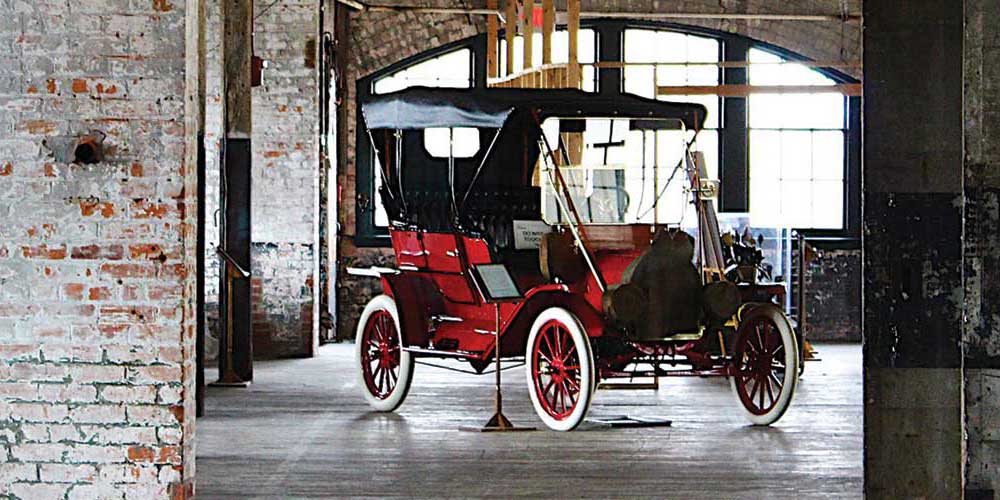By Robert Tate, Automotive Historian and Researcher
Images courtesy of the General Motors Media Archives
Published 2.26.2020
 GM Map of Milford Proving Grounds (GM Media Archives)
GM Map of Milford Proving Grounds (GM Media Archives)
General Motors remains one of the largest automotive companies in the world. When you look back at the history of how the company engineered and tested their automobiles, you have to start with the GM Proving Grounds, established in 1924.
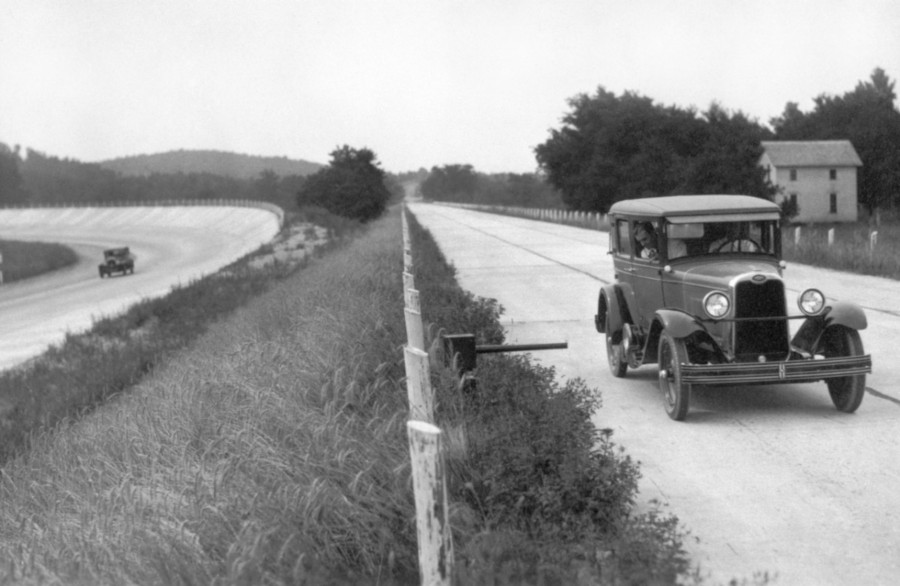 A 1920s photo of the Proving Grounds (GM Media Archives)
A 1920s photo of the Proving Grounds (GM Media Archives)
The testing facility located in Milford, Michigan was put together to evaluate improvements to GM cars and trucks, as well as new safety features. In the beginning, the most scientific conditions were used to test GM products.
 Engineer tests for vehicle sound and vibration (GM Media Archives)
Engineer tests for vehicle sound and vibration (GM Media Archives)
During the 1920s and early 1930s, both roads and automobiles were changing in America. Americans were buying more automobiles for business or family matters. Automotive historians have said that engineering road testing was being conducted on a new four-wheel brake system outside of Flint, Michigan in 1923.
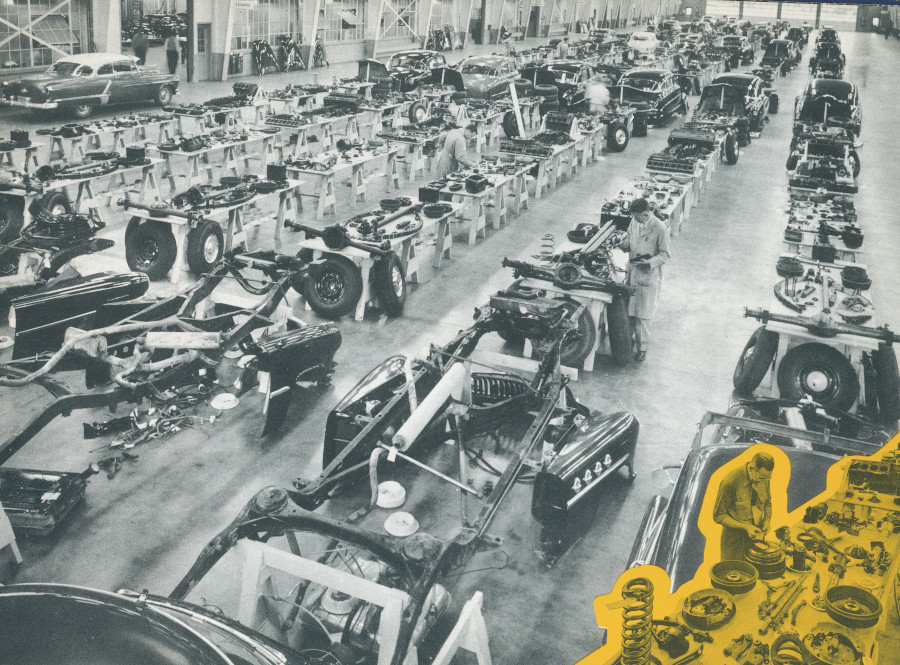 Cars are dismantled after 25000 miles for testing 1951 (GM Media Archives)
Cars are dismantled after 25000 miles for testing 1951 (GM Media Archives)
The idea for the Proving Ground testing program started one afternoon in October 1923 at a meeting of the newly organized GM General Technical committee. At the meeting, the committee discussed speed testing for new GM products, along with laboratories, safety research and vibration controls. Fuel economy was also a major focus during testing procedures at the GM Proving Grounds.
Between 1924 and 1926, GM purchased 1,268 acres of land from 19 different property owners at a cost of $110,000 dollars. As the development of the Proving Grounds would continue, the first building constructed was a 200 x 600-foot service garage with a clubhouse that provided adequate sleeping arrangements for GM employees. During the winter months, only the clubhouse had a heating system for its employees.
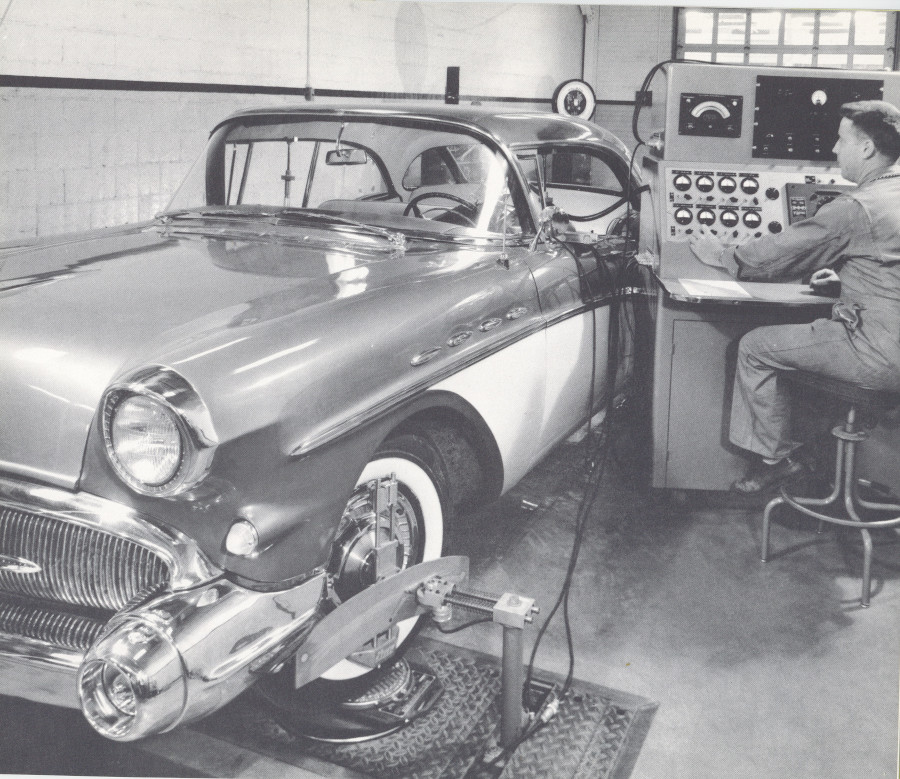 A 1957 Buick undergoes a steering test (GM Media Archives)
A 1957 Buick undergoes a steering test (GM Media Archives)
GM employees referred to the Proving Grounds as the “PG,” while the company defined it as an area providing flat spaces and rolling hills for test drivers. The PG also offered a 3.8-mile oval track which was used for high-speed testing, as well as durability trails and rough roads. Since the early days of crash testing, began at GM in the 1930s, test techniques and instrumentation have become highly sophisticated.
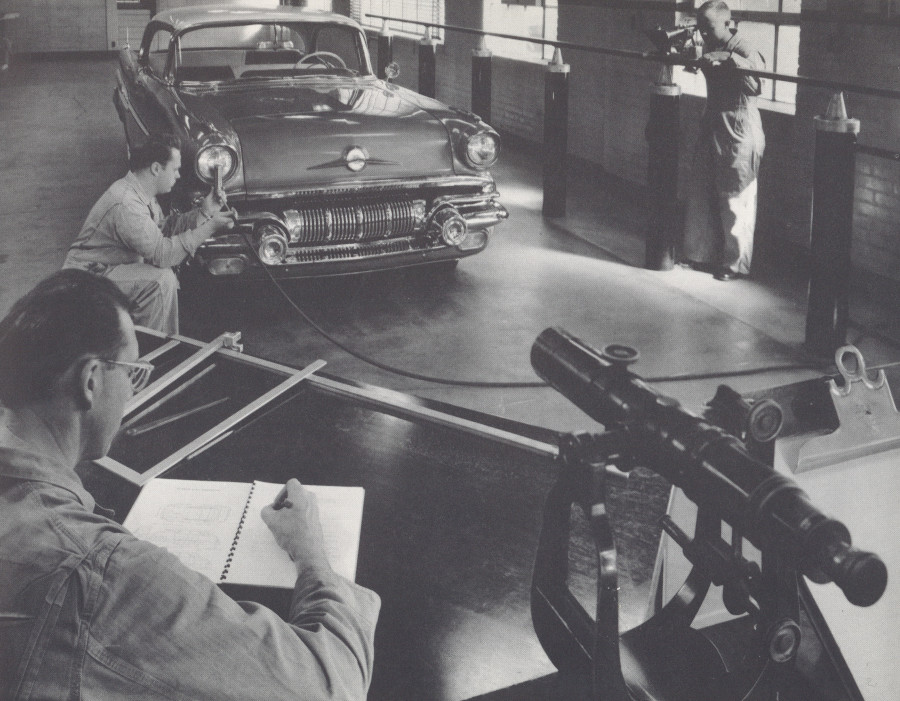 A 1957 Pontiac undergoes testing for headlamps and size and roominess (GM Media Archives)
A 1957 Pontiac undergoes testing for headlamps and size and roominess (GM Media Archives)
In 1951, 2,274 acres of land were acquired near GM’s Phoenix, Arizona laboratory, and a five-mile circular track was constructed. It was used for testing cars and trucks at varying speeds. Additional garage and laboratory facilities in Manitou Springs, Colorado provided the headquarters for extensive automobile and truck testing along the famous trail to the summit of Pikes Peak and similar mountain roads.
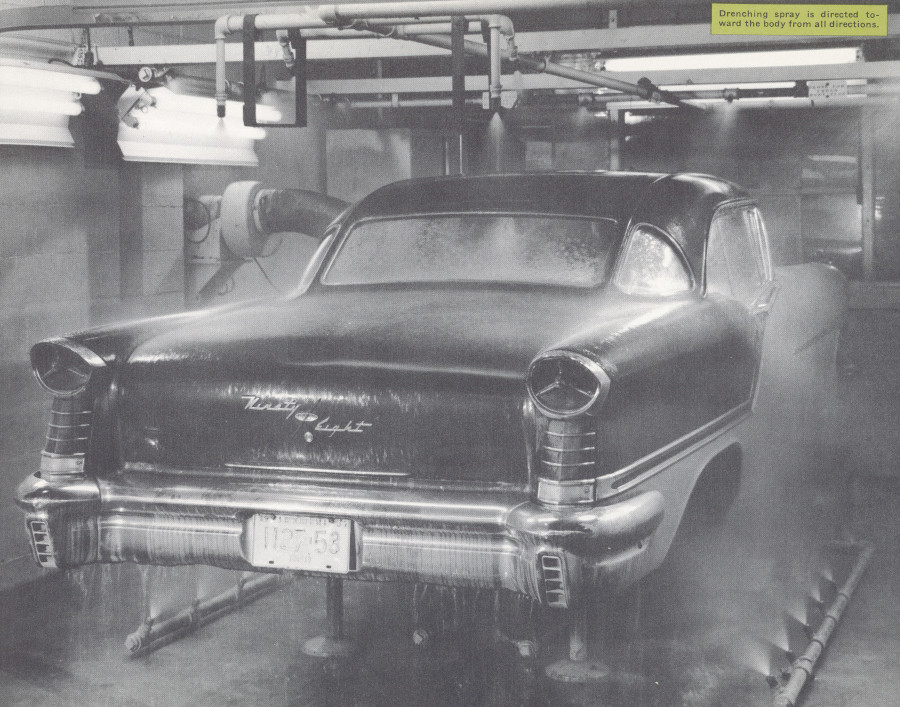 A 1957 Olds 98 undergoes testing for water leaks (GM Media Archives)
A 1957 Olds 98 undergoes testing for water leaks (GM Media Archives)
By the 1960s and 1970s, the GM Proving Grounds were adding more equipment to keep up with the latest technology, and more space was added to facilitate testing. A 4.612-acre site in the Arizona desert near Phoenix became a hot-weather location for testing new products, as well as a site for new and extensive laboratory facilities for conducting emissions performance and economy testing. GM also had a vehicle emission laboratory in Van Nuys, California.
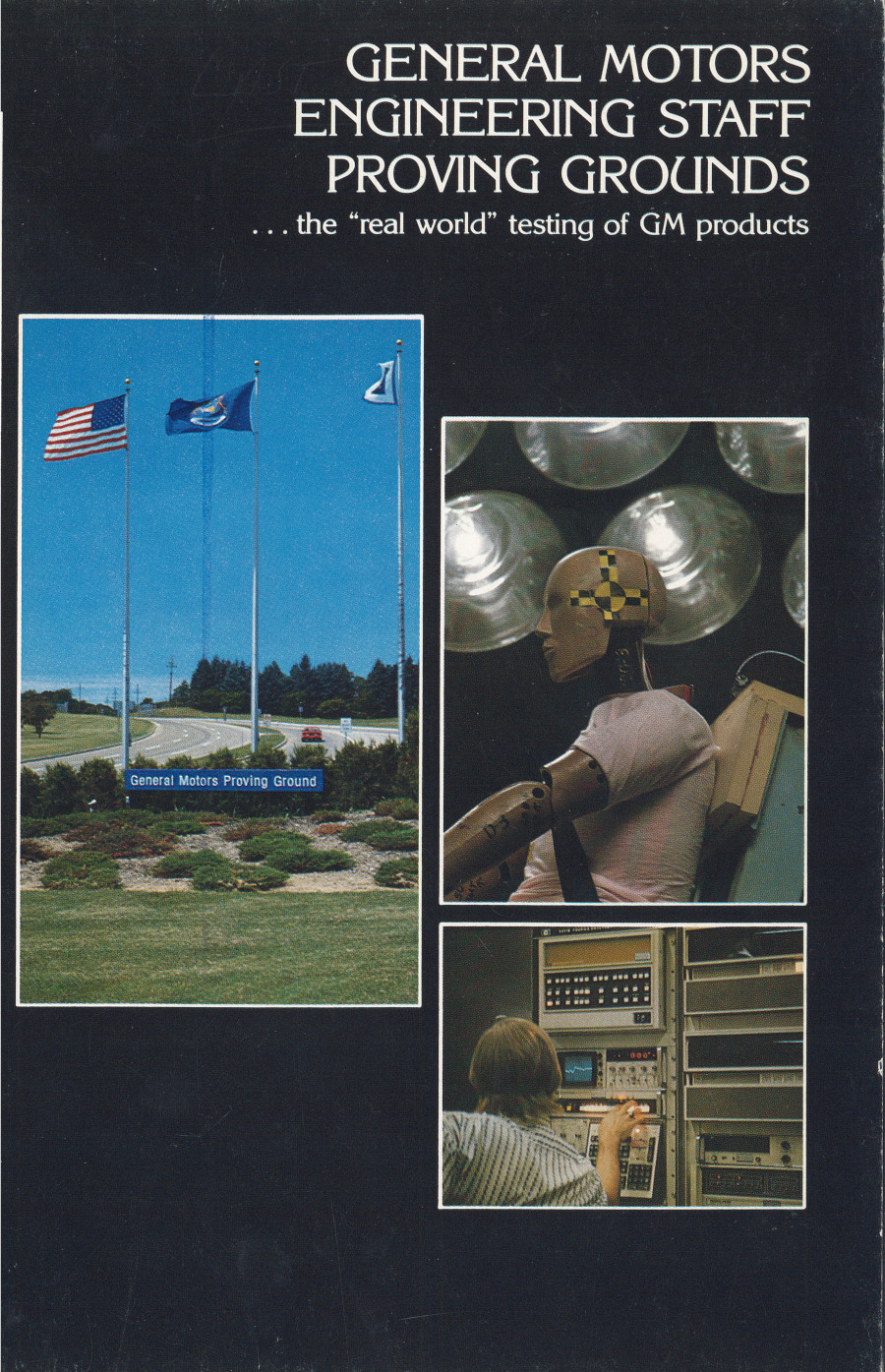 1978 GM Engineering Staff Proving Grounds brochure (GM Media Archives)
1978 GM Engineering Staff Proving Grounds brochure (GM Media Archives)
When the testing is over, vehicles are sometimes disassembled and studied. When you really look at it, what goes on in these laboratories is just as important as what goes on out on the road. Today’s computer technology helps the men and women at the Proving Grounds dedicate themselves not to just improve the safety of GM products, but they are also saving lives.
In conclusion, 2014 was the year that GM’s Milford Proving Grounds celebrated 90 years of testing new cars and trucks that are now part of our automotive heritage. This story is dedicated to the men and women of the past and present who worked at this great place and represented all kinds of everyday driving.
Bibliography
Shea, Terry. “GM’s Milford Proving Grounds to Celebrate 90th Birthday.“ Automobilia – Hemmings. August 11, 2014.
Maher, Mark. “The General Motors Proving Grounds The Early Days.” SAE Supercharger newsletter - Special Feature.


